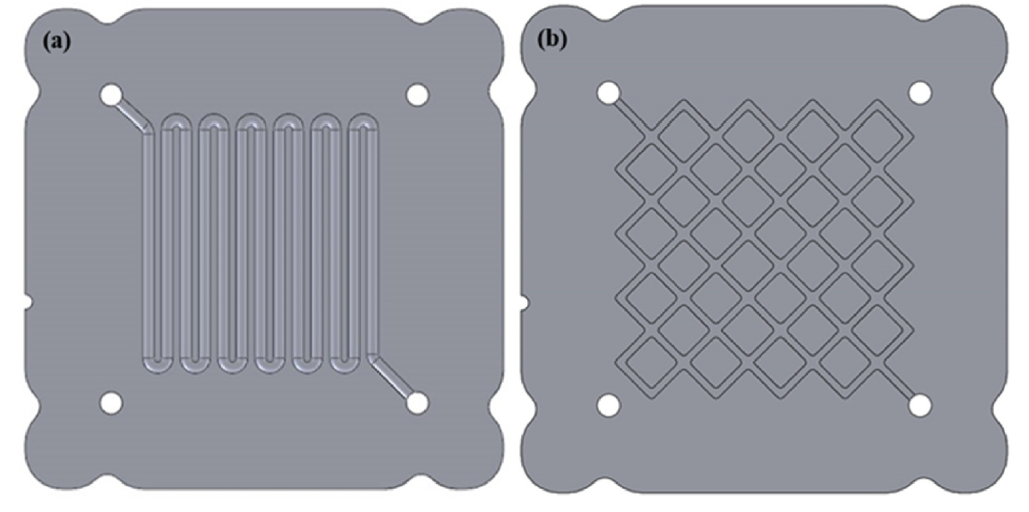| (2025.02) Numerical investigation on the performance of proton exchange membrane fuel cell metallic bipolar plate with decussate flow channel configurations | |||||
| 작성자 | 관리자 | 작성일 | 2025-03-05 | 조회수 | 60 |
|---|---|---|---|---|---|
|
· 논문명 : Numerical investigation on the performance of proton exchange membrane fuel cell metallic bipolar plate with decussate flow channel configurations · 저 자 : Cahyani Windarto, Ocktaeck Lim∗ · 게재지 : International Journal of Hydrogen Energy (2025, 101, 1093-1104) · 초록 Compact and low-weight structures perform an essential part in enhancing the capability of high-power proton exchange membrane fuel cells (PEMFC). The primary issue for this kind of metallic bipolar plate is that an arrangement of both plates provides three flow fields: an anode side, a cathode side, and a coolant. In this study, a decussate flow field (DFF) was proposed as an improvement over the conventional serpentine flow field (SFF) to enhance the mass transfer capabilities. The effect of the decussate flow channel configurations for both the DFF BPP and the SFF BPP on the performance of PEMFC was investigated using three-dimensional computational fluid dynamics ANSYS modelling. The depth of the channel of the DFF bipolar plate was varied in the range of 0.3 m ~ 0.75 mm to study the effect of dimension on the overall capability. The simulation outcomes demonstrat d that with the rise of the depth of DFF bipolar plate promoted superior oxygen transportation and more efficient water removal compared to the SFF bipolar plate. The bipolar plate DFF with a 0.75 mm depth design shows a uniform dispersion of current density and temperature as compared to the SFF bipolar plate. The simulation also indicated that the PEMFC with the DFF bipolar plate demonstrated better electrochemical performance compared to the PEMFC with the SFF bipolar plate. The BPP with 0.75 mm depth DFF shows a power density with a maximum value of 508.24 mW/cm2, while SFF shows a power density with a maximum value of 395.56 mW/cm2. The aforementioned results offer an important path for designing decussate flow channels that can increase fuel cell power density and progress the creation of useful fuel cell technologies.
|
|||||


